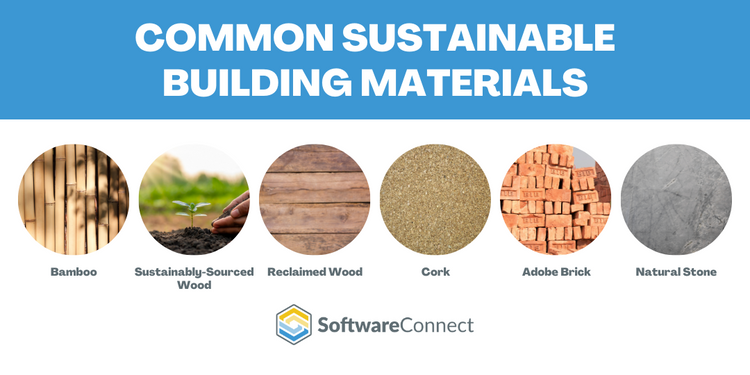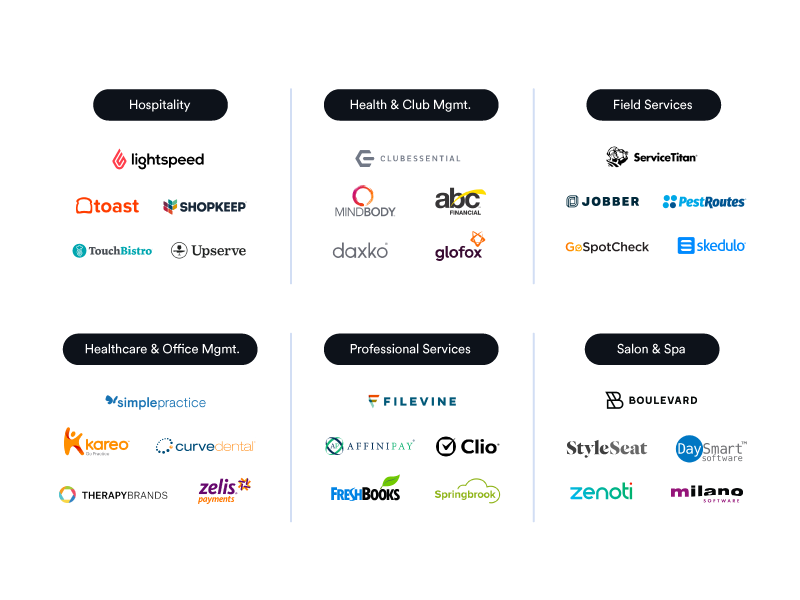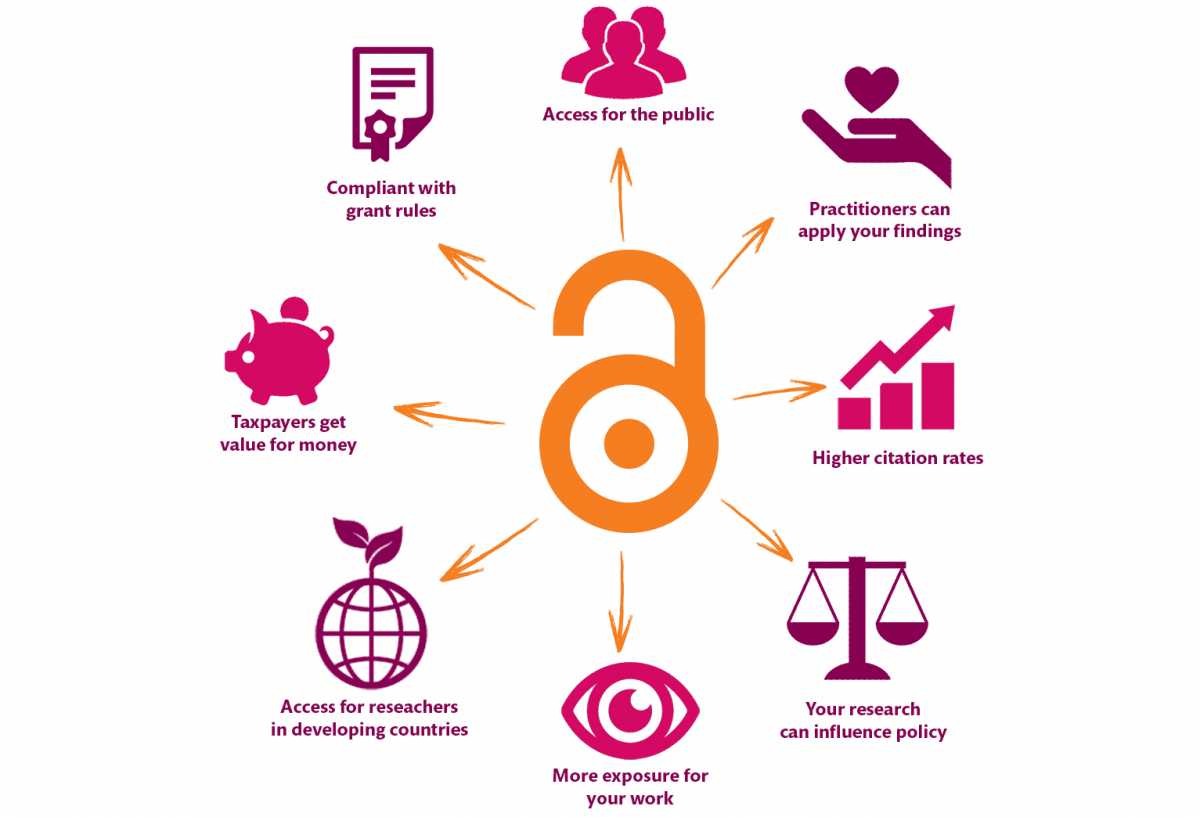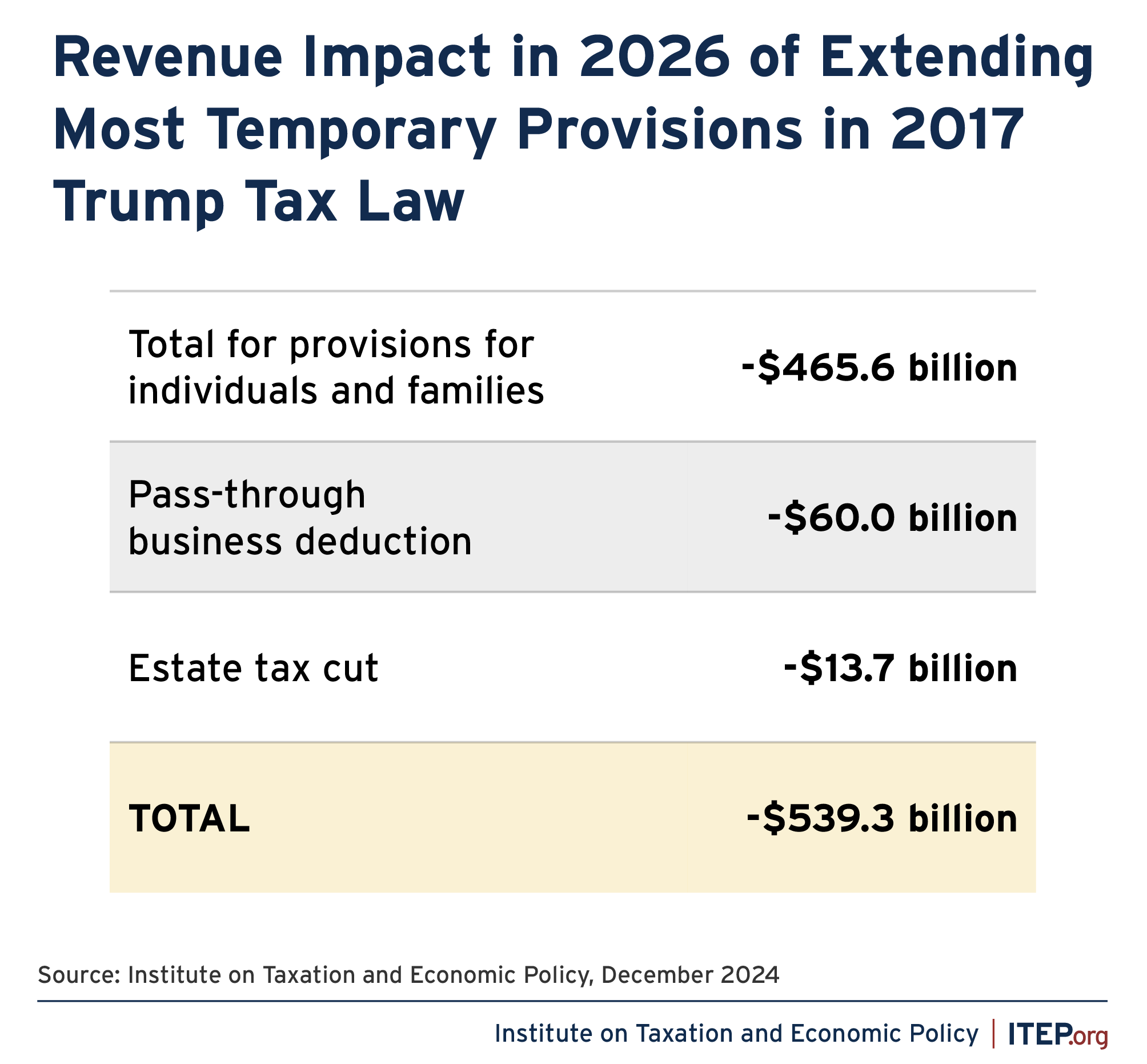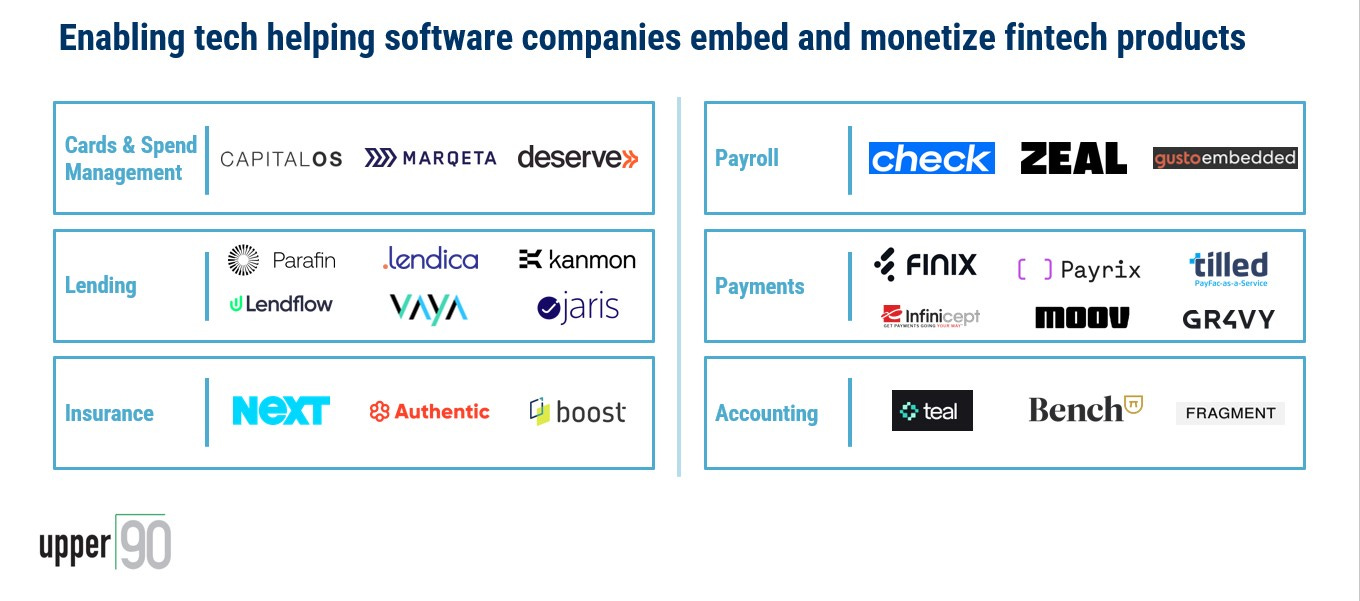What is Embedded Finance & How Does it Work?
What Exactly is Embedded Finance?
Embedded finance is the seamless integration of financial services into non-financial platforms and applications. Instead of users needing to navigate to a separate bank or financial institution’s website or app, they can access financial products and services directly within the platforms they already use regularly. Think of it like this: you’re using your favorite shopping app, and suddenly you have the option to pay with a buy-now-pay-later service, or take out a loan to finance your purchase, all without leaving the app. That’s embedded finance in action.
Examples of Embedded Finance in Action
The applications of embedded finance are incredibly diverse and expanding rapidly. Consider a ride-sharing app offering users instant insurance for each ride, a travel booking site allowing customers to secure travel insurance or finance their trip, or a social media platform enabling peer-to-peer payments. These are all practical examples of how companies are leveraging embedded finance to enhance user experience and expand revenue streams. Even software-as-a-service (SaaS) businesses are getting in on the action, offering integrated invoice financing or payment solutions for their clients directly within their platform.

How Embedded Finance Works: The Technical Side
Behind the scenes, embedded finance relies on a complex network of partnerships and APIs (Application Programming Interfaces). The non-financial platform partners with financial service providers (like banks, lenders, and insurers) to offer their services. APIs act as the bridges, connecting the platform’s user interface with the financial institution’s backend systems. This allows for secure and efficient data transfer, enabling users to seamlessly complete financial transactions without ever leaving the main application. Robust security protocols and regulatory compliance are absolutely crucial to ensure the safety and privacy of user data.
Benefits for Businesses Implementing Embedded Finance
For businesses, embedded finance offers a multitude of advantages. Primarily, it enhances customer loyalty by providing a more convenient and personalized user experience. It can also significantly boost revenue through increased sales and added fees from financial products. By offering relevant financial services, businesses can better meet customer needs and increase customer lifetime value. Furthermore, it can lead to the development of new revenue streams and open up opportunities for strategic partnerships with financial institutions.
Benefits for Consumers Using Embedded Finance Services
Consumers benefit greatly from the ease and convenience embedded finance offers. The process is streamlined, making financial transactions quicker and simpler. Users can access needed financial products at the precise moment they need them – no more navigating to separate websites or apps to complete transactions. This integrated approach removes friction and enhances the overall user experience, potentially offering more competitive pricing or tailored financial products based on individual needs and context.
The Role of APIs and Partnerships in Embedded Finance
APIs are the lifeblood of embedded finance, facilitating the communication between the platform and the financial service provider. These APIs allow for secure and efficient transfer of data, including user information, transaction details, and risk assessment factors. Strong partnerships between the technology platform and financial institutions are critical to ensuring compliance with regulations, maintaining data security, and providing a seamless customer experience. Selecting the right partners is essential to success, as they bring the financial expertise and regulatory know-how.
Security and Regulatory Considerations in Embedded Finance
Given the sensitive nature of financial data, security and regulatory compliance are paramount. Robust security measures, including encryption and multi-factor authentication, must be in place to protect user data from unauthorized access. Furthermore, businesses must comply with relevant regulations, such as data privacy laws (like GDPR or CCPA) and financial regulations specific to the offered products. Meeting these stringent requirements is critical to maintaining trust and avoiding legal repercussions.
The Future of Embedded Finance
The future of embedded finance is bright, with ongoing innovations and expansion into new areas. We can expect to see further integration into everyday applications, with even more diverse financial products becoming readily available. The potential to personalize financial services based on individual user behavior and needs is enormous. Expect more sophisticated risk assessment techniques, AI-driven solutions, and a continued focus on improving security and regulatory compliance to fuel the growth of embedded finance across industries. Read also about what is embedded finance.
Unlock Your Research New OA Publishing Grants
Understanding the Landscape of Open Access Publishing
The world of academic publishing is undergoing a significant shift towards open access (OA). This means making research articles freely available online, removing paywalls that traditionally restrict access. While this offers immense benefits – wider dissemination of knowledge, increased collaboration, and greater impact – the financial burden on researchers can be substantial. Many journals charge hefty publication fees, making it difficult for researchers, particularly those in less well-funded institutions, to participate in this crucial move towards open science. This is where OA publishing grants come in, offering vital support to researchers aiming to publish their work openly.
The Rise of Open Access Publishing Grants
Recognizing the financial barriers to OA publishing, numerous organizations, including funding agencies, universities, and philanthropic foundations, have established grants specifically designed to support researchers in covering article processing charges (APCs). These grants vary widely in their eligibility criteria, funding amounts, and application processes. Some are targeted towards specific disciplines or research areas, while others have broader scopes. The availability of these grants is steadily increasing, reflecting a growing global commitment to making research publicly accessible.
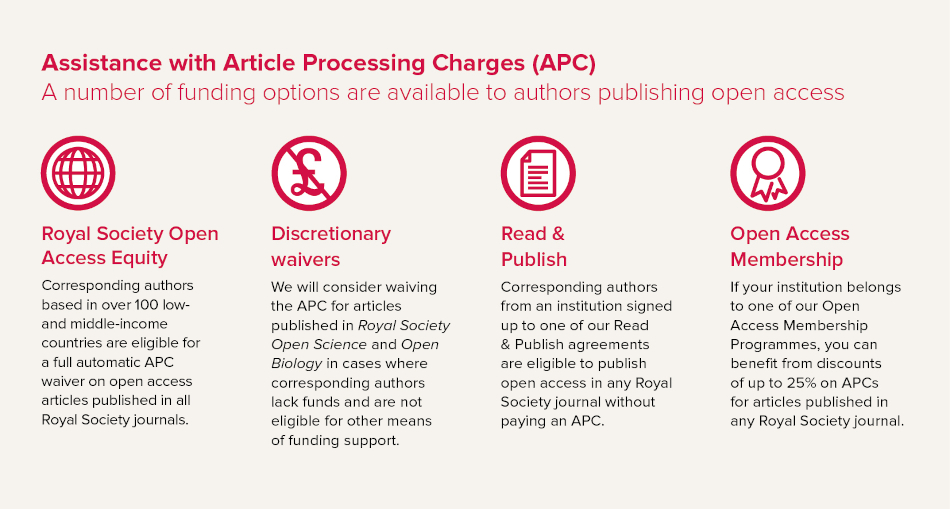
Identifying Relevant OA Publishing Grants
Finding the right OA publishing grant can feel overwhelming given the sheer number of options available. A thorough search is crucial. Begin by checking your institution’s internal funding opportunities; many universities offer internal grants specifically for OA publishing. Next, explore national and international funding agencies. Websites like those of the National Institutes of Health (NIH) in the US or the European Research Council (ERC) in Europe are excellent starting points. You can also utilize online grant databases that allow you to filter by keywords like “open access,” “publication fees,” and your specific research area. Don’t hesitate to reach out to your institution’s research office or library for assistance; they often possess valuable expertise and resources in this area.
Crafting a Competitive Grant Application
A strong grant application is paramount to securing funding. Start by carefully reading the grant guidelines; failure to adhere to specifications can lead to immediate rejection. Clearly articulate the significance of your research and why open access publication is crucial for its dissemination. Demonstrate a clear understanding of the grant’s objectives and how your project aligns with them. Present a detailed budget, justifying all expenses. A well-written narrative that highlights the broader impact of your research and its contribution to the open science movement will significantly strengthen your application. Finally, proofread meticulously to avoid any errors.
Navigating the Application Process and Beyond
The application process typically involves submitting a proposal, often including a research abstract, budget, and supporting documents like letters of support. Be sure to meet all deadlines and follow any instructions precisely. Once you’ve submitted your application, maintain communication with the granting agency if necessary. If successful, be sure to meticulously manage the funds received and adhere to the reporting requirements stipulated by the grant. Even if unsuccessful, don’t be discouraged. Use the feedback received (if available) to improve future applications. Remember that many grants are highly competitive, and persistence is key.
Maximizing the Impact of Your OA Publication
Securing an OA publishing grant is a significant achievement, but the journey doesn’t end there. To maximize the impact of your open access publication, consider strategies for promoting your research. Utilize social media platforms to share your findings. Engage in public outreach activities to communicate your research to a wider audience. Explore opportunities to present your work at conferences and workshops. By proactively disseminating your research, you can ensure that it reaches the broadest possible audience and contributes meaningfully to the advancement of knowledge.
Exploring Alternative Open Access Models
While APC-based OA publishing is common, other models exist. Some journals operate on a subscription model, offering OA access for specific articles without requiring APCs. Other institutions or organizations might offer support for publishing in journals employing these alternative models. Exploring these options can widen your possibilities and potentially help you to publish your research openly even if you’re unsuccessful in securing a traditional APC-based grant.
Staying Updated on Funding Opportunities
The landscape of OA publishing grants is constantly evolving. New grants are regularly announced, while existing ones may have shifting eligibility criteria. Staying informed is crucial. Regularly check the websites of relevant funding agencies and subscribe to newsletters or email alerts that announce new grant opportunities. Networking with colleagues and attending research conferences can also help you to stay abreast of the latest developments in this dynamic field. Proactive monitoring ensures you don’t miss potentially beneficial funding opportunities. Read more about open access publishing grants.
The Best Sustainable Pet Food [Brand Name]
Understanding the Environmental Impact of Pet Food
We all love our furry friends, but have you ever stopped to consider the environmental footprint of their food? The pet food industry is surprisingly resource-intensive. From the sourcing of ingredients to packaging and transportation, there’s a significant carbon footprint involved. Many conventional pet foods rely on unsustainable farming practices that contribute to deforestation, water pollution, and greenhouse gas emissions. Choosing sustainable pet food is a way to lessen the impact your pet has on the planet and ensures a healthier future for both your animal companion and the environment.
[Brand Name]’s Commitment to Sustainability
[Brand Name] understands this responsibility and is leading the charge in creating truly sustainable pet food. Their commitment goes beyond simply using “eco-friendly” packaging. They focus on the entire supply chain, from the origin of ingredients to the final product. This includes working directly with farmers who utilize regenerative agriculture techniques, prioritizing ethically sourced protein, and minimizing waste throughout the manufacturing process. Their dedication to transparency allows pet owners to make informed decisions, knowing exactly where their pet’s food comes from and how it was produced.

Ethically Sourced and Sustainable Ingredients
One of the key aspects of [Brand Name]’s sustainability is their focus on ethically sourced ingredients. They prioritize locally sourced produce whenever possible, reducing transportation emissions and supporting local economies. Their meat sources are carefully selected, ensuring animal welfare is a top priority. They avoid ingredients associated with deforestation or unsustainable farming practices. They use sustainable and renewable resources wherever feasible and prioritize minimizing the need for synthetic supplements, using instead naturally derived vitamins and minerals. This ensures both the nutritional value and environmental friendliness of their products.
Minimizing Waste and Reducing Packaging
[Brand Name] is committed to minimizing waste at every stage of production. They utilize efficient manufacturing processes to reduce energy consumption and minimize byproducts. Their packaging is designed with sustainability in mind, using recycled and recyclable materials whenever possible. They actively seek ways to reduce the overall amount of packaging required, promoting a circular economy approach to minimize environmental impact. They even encourage customers to recycle their packaging, further supporting their eco-conscious initiative.
Regenerative Agriculture: A Key Component of [Brand Name]’s Sustainability
A cornerstone of [Brand Name]’s approach is their partnership with farmers who practice regenerative agriculture. This holistic approach focuses on improving soil health, biodiversity, and water retention. Unlike conventional farming, regenerative agriculture doesn’t deplete natural resources; it actively replenishes them. This results in healthier animals, healthier land, and a reduced carbon footprint. By supporting regenerative agriculture, [Brand Name] is actively contributing to a more sustainable food system for both pets and people.
Transparency and Traceability: Knowing Where Your Pet’s Food Comes From
Transparency is crucial for [Brand Name]. They provide clear and detailed information about the origin of their ingredients, the farming practices employed, and the manufacturing process. This allows pet owners to fully understand the sustainability of their choices. Their website often features detailed information about their supply chain, and they are actively engaged with their customers, addressing their questions and concerns about their commitment to environmental responsibility. This level of transparency builds trust and encourages responsible pet ownership.
Beyond the Bowl: Supporting Conservation Efforts
[Brand Name]’s commitment to sustainability extends beyond their own operations. They actively support various conservation initiatives, contributing to organizations dedicated to protecting wildlife and preserving natural habitats. This holistic approach underscores their dedication to a more sustainable future for all living creatures. They often collaborate with charities and highlight the importance of environmental stewardship to their customers, encouraging a wider positive impact on the world.
The Future of Sustainable Pet Food with [Brand Name]
[Brand Name] is not just a pet food brand; it’s a movement towards a more sustainable future for our furry friends and the planet. Their innovative approach, commitment to transparency, and dedication to ethical and environmentally conscious practices are setting a new standard for the industry. By choosing [Brand Name], pet owners actively contribute to a healthier planet while providing their beloved companions with high-quality, nutritious food. The company continues to innovate and explore new ways to reduce their impact, constantly striving for even greater sustainability in their practices. Visit here to learn about the best sustainable pet food brand.
Green Architecture Nature’s Building Blocks
Harnessing Sunlight: Passive Solar Design
Passive solar design is a cornerstone of green architecture. It leverages the sun’s energy to heat and light buildings, minimizing the need for artificial systems. This involves strategic placement of windows to maximize solar gain in winter and minimize it in summer, using thermal mass materials like concrete or stone to store and release heat, and designing overhangs and shading devices to control sunlight exposure. Efficiently designed passive solar buildings can significantly reduce energy consumption for heating and cooling, leading to lower utility bills and a smaller carbon footprint.
Embracing Natural Ventilation: Optimizing Airflow
Good ventilation is crucial for a healthy and comfortable indoor environment. Green architecture prioritizes natural ventilation techniques, minimizing reliance on energy-intensive mechanical systems. This can involve strategically placed windows and vents to create cross-ventilation, utilizing stack effect (where warmer air rises and cooler air sinks), and incorporating wind catchers to direct airflow. Natural ventilation improves indoor air quality by reducing pollutants and increasing comfort, further contributing to a sustainable design.

Sustainable Materials: Building with Nature
The choice of building materials is paramount in green architecture. Sustainable materials, such as reclaimed wood, bamboo, recycled steel, and locally sourced stone, minimize environmental impact compared to traditional options. These materials often require less energy to produce and transport, reducing their carbon footprint. Moreover, the use of sustainably harvested timber promotes responsible forestry practices, supporting biodiversity and healthy ecosystems. The inherent qualities of many natural materials, like their insulation properties or breathability, also contribute to a more energy-efficient and comfortable building.
Water Conservation: Smart Water Management
Water conservation is another key aspect of green building. Strategies include the use of rainwater harvesting systems to collect and store rainwater for irrigation or toilet flushing, the installation of low-flow fixtures (toilets, showers, faucets) to reduce water consumption, and the incorporation of drought-tolerant landscaping to minimize irrigation needs. Greywater recycling, which involves reusing wastewater from showers and sinks for non-potable purposes like irrigation, is another innovative water-saving technique often employed in green building projects.
Protecting Biodiversity: Creating Green Spaces
Green architecture isn’t just about the building itself; it’s about the surrounding environment too. Integrating green spaces, such as rooftop gardens, green walls, and permeable pavements, creates habitats for wildlife, improves air quality, and reduces the urban heat island effect. These green spaces also enhance the aesthetic appeal of the building and provide opportunities for recreation and relaxation, improving the overall quality of life for occupants.
Energy Efficiency: Beyond Passive Design
While passive design strategies are fundamental, green architecture also embraces advanced energy-efficient technologies. This includes the use of high-performance insulation to minimize heat transfer, the installation of energy-efficient windows and doors, and the integration of renewable energy sources such as solar panels or wind turbines. Smart building management systems can optimize energy consumption based on occupancy and weather conditions, further reducing energy waste. The combination of passive and active strategies results in significant energy savings and reduces reliance on fossil fuels.
Indoor Environmental Quality: A Healthy Home
Green architecture prioritizes the health and well-being of occupants by focusing on indoor environmental quality. This involves selecting low-VOC (volatile organic compound) materials to minimize indoor air pollution, using natural ventilation strategies to improve air circulation, and optimizing lighting to reduce eye strain and improve mood. By minimizing exposure to harmful chemicals and pollutants, green buildings contribute to a healthier and more productive living environment.
Lifecycle Assessment: A Holistic Approach
A complete green building approach considers the entire lifecycle of a building, from the extraction of materials to its eventual demolition and disposal. Lifecycle assessments evaluate the environmental impact of each stage, identifying areas for improvement and minimizing waste. This holistic approach ensures that sustainability is considered not just during construction, but throughout the building’s lifespan, contributing to a more responsible and environmentally conscious approach to construction. Read more about sustainable building materials.
Top Vertical SaaS Companies Transforming Industries
The Rise of Vertical SaaS: Catering to Specific Industry Needs
The software-as-a-service (SaaS) industry has exploded in recent years, but a significant portion of this growth comes from vertical SaaS companies. Unlike horizontal SaaS solutions that cater to a broad range of businesses, vertical SaaS platforms are meticulously designed to address the unique requirements of specific industries. This specialized approach allows for deeper integration, enhanced functionality tailored to industry-specific workflows, and a more intuitive user experience for professionals within their niche.
Healthcare: Streamlining Patient Care and Administrative Tasks
The healthcare industry is undergoing a digital transformation, and vertical SaaS companies are at the forefront. Platforms specializing in electronic health records (EHRs), telehealth solutions, and practice management software are streamlining operations, improving patient care, and boosting efficiency. Companies like Epic Systems, Athenahealth, and Teladoc are prime examples, demonstrating the power of tailored solutions to manage complex healthcare data, scheduling, billing, and communication.
Finance: Enhancing Efficiency and Compliance in a Regulated Environment
The financial services sector is heavily regulated, demanding sophisticated software solutions to manage risk, comply with regulations, and maintain accuracy. Vertical SaaS companies are providing specialized tools for investment management, wealth management, lending, and accounting. These platforms offer features like robust reporting, automated compliance checks, and secure data management, empowering financial institutions to operate efficiently while adhering to strict regulatory standards. Examples include firms focused on robo-advising, regulatory compliance software, and loan origination systems.
Real Estate: Connecting Agents, Buyers, and Sellers with Seamless Technology
The real estate industry has seen a significant influx of technology, transforming how properties are listed, marketed, and sold. Vertical SaaS platforms are powering this shift, offering solutions for property management, CRM for real estate agents, and virtual touring tools. These platforms streamline the complex processes involved in property transactions, from lead generation and marketing to closing and post-sale management. Think of companies specializing in property management software, digital marketing tools for realtors, and virtual staging platforms.
Education: Personalized Learning and Improved Administrative Efficiency
The education sector is increasingly adopting technology to personalize learning experiences and manage administrative tasks more efficiently. Vertical SaaS companies are delivering solutions such as learning management systems (LMS), student information systems (SIS), and educational assessment platforms. These platforms improve student engagement, provide teachers with valuable data-driven insights, and streamline administrative workflows, contributing to a more effective and efficient educational environment. Examples include companies offering customized LMS solutions, online assessment tools, and platforms for managing student data.
Construction: Optimizing Project Management and Collaboration
The construction industry, known for its complexity and fragmented workflows, is benefiting significantly from vertical SaaS solutions. These platforms offer project management tools, collaboration software, and cost estimation capabilities, improving communication, tracking progress, and managing resources more effectively. Specialized platforms cater to specific aspects of construction, from bidding and estimating to scheduling and risk management, ultimately contributing to on-time and on-budget project completion. Examples include companies offering project management software tailored to construction projects, as well as platforms focused on safety and risk management.
The Future of Vertical SaaS: Continued Specialization and Integration
The success of vertical SaaS companies highlights the growing need for specialized software solutions that address the unique challenges and opportunities within specific industries. As technology continues to evolve, we can expect to see even more specialized platforms emerge, with increased focus on integration and data-driven insights. The future of vertical SaaS lies in its ability to provide increasingly sophisticated and tailored solutions that empower businesses to achieve greater efficiency, innovation, and growth within their respective sectors. Read more about the best vertical SaaS companies.
Open Access Publishing Your Guide to Free Knowledge
What is Open Access Publishing?
Open access publishing is a movement that advocates for making scholarly research freely available to anyone, anywhere, without financial, legal, or technical barriers. This contrasts with traditional subscription-based publishing models where access to journals and articles is often restricted to those who can afford expensive subscriptions, usually universities and large research institutions. Open access aims to democratize knowledge, making it accessible to a wider audience, including researchers in developing countries, students, and the general public.
The Benefits of Open Access
The benefits of open access are numerous. Increased accessibility leads to greater research impact, as more people can read and cite the work. This, in turn, can accelerate scientific progress and innovation. Open access also fosters collaboration and transparency, allowing researchers to easily build upon existing work and identify potential errors or biases. Finally, open access can contribute to public engagement with science, empowering citizens to make informed decisions based on evidence-based research.

Different Open Access Models
There are several different models for open access publishing. The most common are the “gold” and “green” road approaches. Gold open access means the article is published in an open access journal, where the author (or their institution) pays an article processing charge (APC). Green open access, on the other hand, involves making the author’s accepted manuscript freely available in a repository, often alongside the publisher’s version. Choosing the right model depends on factors such as funding availability and the journal’s policies.
Finding Reputable Open Access Journals
Not all open access journals are created equal. Some may have low standards or engage in predatory publishing practices. It’s crucial to carefully evaluate potential journals before submitting your work. Look for journals indexed in reputable databases like PubMed Central, Directory of Open Access Journals (DOAJ), or Scopus. Check the journal’s impact factor (if applicable) and editorial board to assess its credibility. Beware of journals that solicit submissions aggressively, promise quick publication times without rigorous peer review, or request excessive fees.
Understanding Article Processing Charges (APCs)
Many gold open access journals charge APCs to cover the costs of publishing and maintaining the journal. These fees can vary significantly depending on the journal and its prestige. Some funding agencies and institutions provide grants or waivers to cover APCs, so it’s essential to explore these options before submitting your manuscript. Understanding the APC structure and budget implications is crucial for planning your open access publication strategy.
Preparing Your Manuscript for Open Access Publication
Preparing your manuscript for open access publication doesn’t differ significantly from preparing it for traditional journals. However, some journals might have specific formatting requirements or licensing options. Familiarize yourself with the target journal’s author guidelines and ensure your manuscript adheres to these guidelines. Pay close attention to any specific requirements related to open access licenses, such as Creative Commons licenses, which determine how your work can be reused and shared by others.
Copyright and Licensing in Open Access
Open access doesn’t mean that your work is entirely free of copyright. Instead, you retain copyright but grant specific rights to others to access and reuse your work under a chosen Creative Commons license. These licenses allow you to control how others use your work (e.g., allowing for non-commercial use, requiring attribution, etc.). Understanding these licenses is crucial for ensuring your work is shared appropriately while protecting your intellectual property rights.
The Future of Open Access
The open access movement is continuously evolving, with ongoing discussions about sustainability, equity, and the role of technology in enhancing access to scholarly information. Efforts are underway to improve the discoverability and accessibility of open access publications, and to address concerns about the cost and fairness of APCs. The future of scholarly communication likely involves a greater emphasis on open access, paving the way for a more inclusive and impactful research ecosystem.
Promoting Your Open Access Publication
Once your article is published, consider actively promoting it to maximize its reach and impact. Share your work on social media, upload it to preprint servers, and engage with other researchers in your field. Utilize your institutional repository to ensure wider availability. Promoting your open access publication is vital to achieving the full potential of making your research freely accessible to the global community. Learn more about open access publishing services here.
Eco-Friendly Pet Food Packaging Top Suppliers
The Rise of Sustainable Packaging in the Pet Food Industry
The pet food industry is undergoing a significant shift towards sustainability, driven by increasing consumer awareness of environmental issues and a growing demand for eco-friendly products. This extends beyond the food itself to encompass the packaging, with more and more pet owners seeking out brands committed to reducing their environmental footprint. This change is pushing manufacturers to seek out innovative and responsible packaging solutions, leading to a rise in eco-friendly options and a surge in suppliers specializing in sustainable materials and processes.
Leading Suppliers of Sustainable Pet Food Packaging: Material Focus
Several key players are leading the charge in providing sustainable packaging for the pet food industry. Many focus on materials like recycled paperboard, offering various designs from simple boxes to more complex structures. Others specialize in compostable films made from plant-based materials, such as PLA (polylactic acid) derived from corn starch or sugarcane. Still others are developing innovative solutions using recycled plastic, ensuring minimal environmental impact while maintaining the necessary barrier properties to preserve food quality and freshness. The choice of material depends heavily on factors like cost, desired shelf life, and the specific needs of the pet food product.
Packaging Innovations for Enhanced Sustainability
Beyond the choice of base material, suppliers are also pushing the boundaries of innovation. This includes exploring lightweighting techniques to reduce material usage without compromising product protection. Water-based inks and coatings are replacing solvent-based alternatives to minimize harmful emissions during the printing process. Furthermore, advancements in barrier technology are allowing for thinner, more sustainable films that still effectively protect pet food from moisture, oxygen, and light. This is crucial for maintaining the quality and extending the shelf life of the food.
Considering the Entire Lifecycle: From Sourcing to Disposal
Truly sustainable packaging solutions consider the entire product lifecycle. Suppliers are increasingly focused on sourcing materials responsibly, prioritizing recycled content and minimizing the use of virgin resources. This often involves working closely with certified suppliers who adhere to strict environmental and social standards. Furthermore, ease of recycling or compostability at the end of the product’s life is paramount. Suppliers are designing packaging that is clearly labeled with recycling instructions or is easily identifiable for composting facilities, making it simpler for consumers to dispose of the packaging responsibly.
Meeting the Demand for Transparency and Traceability
Consumers are demanding more transparency and traceability regarding the sustainability claims of pet food brands. Suppliers are responding by providing detailed certifications and documentation to verify the sustainability credentials of their materials and processes. This often involves third-party certifications such as FSC (Forest Stewardship Council) for sustainably sourced paperboard or certifications confirming compostability according to specific standards. This level of transparency builds trust with consumers and allows brands to showcase their commitment to environmental responsibility.
The Future of Eco-Friendly Pet Food Packaging: Collaboration and Continuous Improvement
The future of sustainable pet food packaging relies on continued collaboration between suppliers, manufacturers, and retailers. This collaboration includes sharing best practices, developing new sustainable materials, and driving innovation in packaging design. Furthermore, a focus on continuous improvement is critical, with ongoing efforts to reduce the environmental impact of packaging throughout its entire lifecycle. This might involve exploring new biodegradable or bio-based materials, enhancing recycling infrastructure, and exploring innovative recycling schemes that support closed-loop systems.
Choosing the Right Supplier: Key Considerations for Pet Food Brands
For pet food brands, selecting the right sustainable packaging supplier is crucial. Key considerations include the supplier’s commitment to sustainability, the range of materials offered, the level of transparency and traceability provided, the supplier’s technological capabilities, and their ability to meet the brand’s specific packaging needs and volume requirements. Thorough due diligence, including auditing supplier facilities and verifying certifications, is essential to ensure the chosen supplier aligns with the brand’s sustainability goals and maintains high standards of quality and performance. Read more about sustainable pet food packaging suppliers.
Trump’s 2025 Interest Rate Plan What You Need to Know
Understanding the Uncertainty Surrounding a Potential Trump 2025 Interest Rate Plan
Predicting Donald Trump’s economic policies, particularly regarding interest rates, is a challenging task. His past actions and statements offer clues, but his approach tends to be unpredictable and often driven by immediate political considerations. Any proposed plan for 2025 would depend heavily on the economic climate at the time and the composition of the Federal Reserve Board, which operates independently from the executive branch. We can, however, analyze potential scenarios based on his previous actions and rhetoric.
Trump’s Past Approach to Interest Rates
During his first term, Trump often publicly criticized the Federal Reserve’s decisions to raise interest rates. He viewed these increases as hindering economic growth, favoring lower rates to stimulate the economy and bolster the stock market. This pressure, though ultimately unsuccessful in dictating specific policy, highlights his preference for lower borrowing costs. However, the actual impact of his pressure is debatable, with economists pointing to other factors influencing the economy’s performance during his presidency.

Potential Scenarios for a 2025 Interest Rate Plan
If re-elected in 2024, several scenarios could unfold regarding interest rates in 2025. One possibility is a continuation of the low-rate environment, potentially aiming for even lower rates to further stimulate economic growth. This might be appealing in a post-pandemic economy still struggling to fully recover, but it also carries risks, such as increased inflation. Conversely, a more cautious approach might prioritize inflation control, potentially leading to rate hikes, even if it dampens short-term economic expansion. The exact course would depend on numerous interacting factors.
The Role of the Federal Reserve
It’s crucial to remember that the Federal Reserve (the Fed) maintains its independence in setting interest rates. While a President can influence the Fed’s choices through appointments to the Board of Governors and through public statements, the Fed is designed to act autonomously to manage monetary policy. Therefore, any “Trump plan” would face the reality of the Fed’s own economic forecasts and assessments, which may or may not align with the administration’s political goals.
The Impact of Inflation on Interest Rate Decisions
Inflation will likely be a dominant factor influencing interest rate decisions in 2025, regardless of who is President. High inflation generally necessitates higher interest rates to cool down the economy. If inflation remains elevated, the Fed would likely prioritize bringing it under control, even if it means slowing economic growth. Conversely, if inflation moderates, a lower-rate environment could become more politically and economically feasible.
The Influence of Global Economic Conditions
The global economic landscape will also significantly shape interest rate policy. Global economic shocks, geopolitical instability, and international trade relations all play a role. A global recession, for instance, could push the Fed (and potentially a Trump administration) toward lower rates to stimulate the US economy. Conversely, strong global growth might allow for higher rates without significant economic disruption. The interconnectedness of the global economy makes predicting this aspect particularly complex.
The Political Implications of Interest Rate Decisions
Interest rates have profound political implications. Lower rates are generally popular in the short term, as they boost consumer spending and investment. However, sustained low rates can lead to inflation and longer-term economic instability. Higher rates, while potentially necessary to curb inflation, often face political criticism as they can slow economic growth and impact borrowing costs for businesses and consumers. A Trump administration would need to navigate this political tightrope carefully.
Potential for Unconventional Monetary Policy
It’s not entirely outside the realm of possibility that a Trump administration might advocate for or even influence the adoption of unconventional monetary policies. These policies, used in the past in response to severe economic crises, involve measures beyond the traditional manipulation of interest rates. This could involve quantitative easing (QE) programs or other unconventional measures, but these carry their own risks and have to be carefully considered by the Fed.
The Importance of Considering Multiple Factors
Predicting interest rate policy in 2025 requires considering multiple interacting factors: the economic climate, inflation levels, global economic conditions, the Fed’s independence, and the President’s policy preferences. While Trump’s past pronouncements give us some hints, any prediction remains highly speculative, and a multitude of unforeseen events could alter the course of events dramatically.
Analyzing the Long-Term Economic Outlook
Ultimately, a successful economic strategy necessitates a long-term perspective that balances short-term goals with sustainable growth. While a specific interest rate policy for 2025 remains elusive, analyzing the interplay of these economic factors provides a more nuanced understanding of the possible scenarios and their potential consequences. A thorough economic assessment, incorporating various data points and projections, is crucial for sound policy-making. Click here to learn about Trump’s interest rate policy in 2025.
Innovative SaaS Transforming Specific Industries
Revolutionizing Healthcare with AI-Powered Diagnostics
The healthcare industry is ripe for disruption, and SaaS solutions are leading the charge. AI-powered diagnostic tools are transforming how doctors analyze medical images, leading to faster, more accurate diagnoses. These SaaS platforms leverage machine learning algorithms trained on vast datasets of medical images to detect anomalies like tumors or fractures with remarkable precision. This not only improves patient outcomes but also streamlines workflows, allowing doctors to spend more time with patients and less time poring over scans. The integration of these tools into existing hospital systems is relatively seamless, offering a quick return on investment for healthcare providers. Furthermore, the ability to access these tools remotely is expanding healthcare access in underserved communities, democratizing access to high-quality diagnostics.
Streamlining Supply Chains with Predictive Analytics
Supply chain management is a complex undertaking, often fraught with unforeseen disruptions. Innovative SaaS solutions are using predictive analytics to forecast demand, optimize inventory levels, and mitigate risks. These platforms integrate data from various sources, including sales forecasts, weather patterns, and geopolitical events, to create a dynamic picture of the supply chain. By anticipating potential bottlenecks and disruptions, businesses can proactively adjust their strategies, minimizing delays and reducing costs. The real-time visibility provided by these SaaS platforms empowers businesses to make informed decisions, leading to increased efficiency and resilience in the face of uncertainty. This is particularly crucial in industries like manufacturing and logistics, where even minor disruptions can have significant ripple effects.
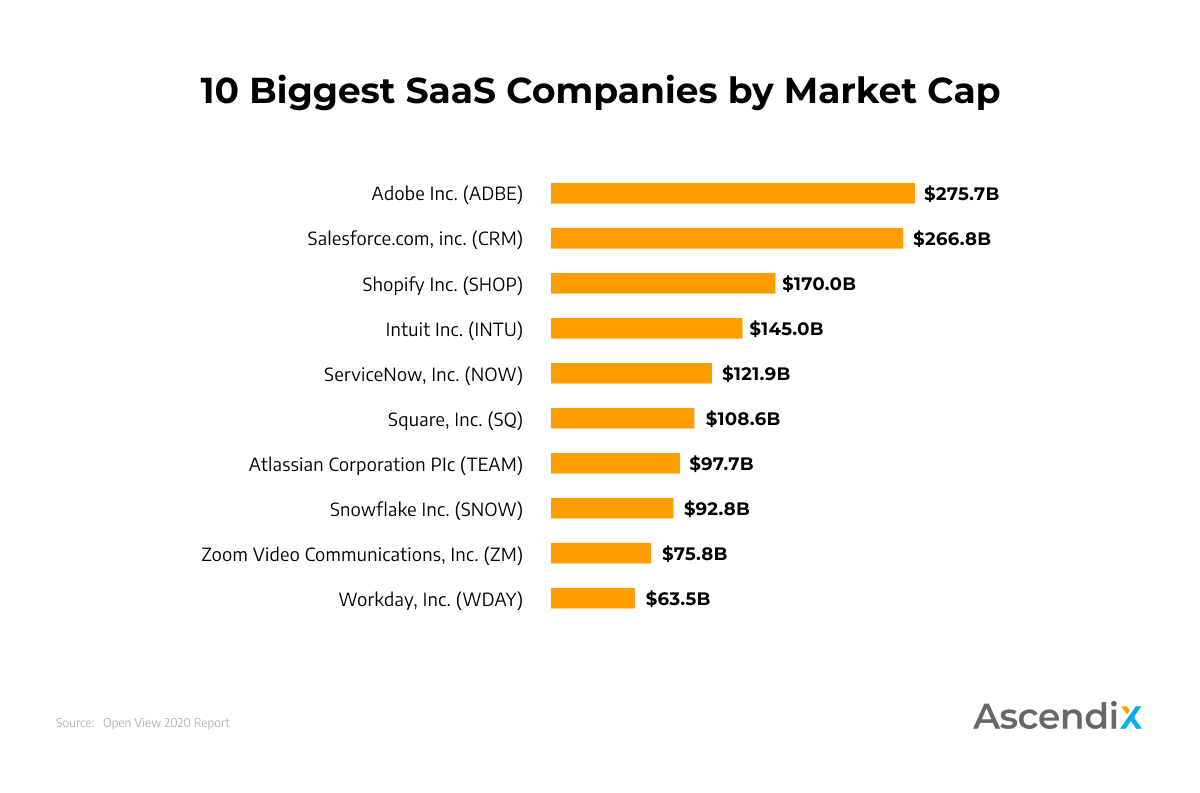
Automating Customer Service with Intelligent Chatbots
Customer service is a crucial aspect of any business, and SaaS solutions are revolutionizing how companies interact with their customers. Intelligent chatbots are becoming increasingly sophisticated, capable of handling a wide range of customer inquiries with remarkable accuracy and efficiency. These AI-powered chatbots can provide instant support, 24/7, answering frequently asked questions, resolving simple issues, and escalating complex problems to human agents. This not only improves customer satisfaction but also frees up human agents to focus on more complex tasks, improving overall productivity. The ability to personalize interactions and learn from past conversations further enhances the effectiveness of these chatbots, making them an indispensable tool for businesses of all sizes.
Enhancing Education with Personalized Learning Platforms
The education sector is undergoing a significant transformation, driven by the rise of personalized learning platforms. These SaaS solutions leverage data analytics to understand individual student needs and tailor educational content accordingly. By tracking student progress and identifying areas where they struggle, these platforms can provide targeted support and resources, ensuring that every student receives the help they need to succeed. This personalized approach is proving to be particularly effective in improving learning outcomes, especially for students who may require additional support or have diverse learning styles. Furthermore, these platforms offer valuable insights to educators, allowing them to adapt their teaching methods and curriculum to better meet the needs of their students.
Boosting Productivity with Project Management Software
Effective project management is essential for success in any industry, and innovative SaaS solutions are transforming how teams collaborate and manage their projects. These platforms provide a centralized hub for communication, task management, and progress tracking, enabling teams to work together seamlessly, regardless of their location. Features like Gantt charts, Kanban boards, and real-time collaboration tools enhance transparency and accountability, ensuring that projects stay on track and within budget. The integration of these platforms with other business tools further streamlines workflows, improving overall productivity and reducing the risk of project failure. This is especially crucial for businesses operating in dynamic and fast-paced environments.
Transforming Finance with Robotic Process Automation (RPA)
The financial sector is increasingly adopting Robotic Process Automation (RPA) through SaaS platforms to automate repetitive tasks, reducing costs and improving accuracy. RPA software can handle tasks such as data entry, reconciliation, and invoice processing, freeing up human employees to focus on more strategic activities. These automated processes significantly reduce the risk of human error, leading to improved accuracy and compliance. Furthermore, RPA solutions can integrate seamlessly with existing financial systems, minimizing disruption and maximizing efficiency. This increased efficiency allows financial institutions to process transactions faster, improve customer service, and gain a competitive edge in a rapidly evolving market.
Improving Real Estate with Virtual Tours and Property Management Tools
The real estate industry is leveraging SaaS to enhance both the buying and selling processes. Virtual tours are becoming increasingly popular, allowing potential buyers to view properties remotely, saving time and effort for everyone involved. Meanwhile, property management software simplifies the administration of rental properties, streamlining tasks such as tenant communication, rent collection, and maintenance requests. These SaaS solutions are proving invaluable in a market where efficiency and convenience are paramount, allowing real estate professionals to manage their portfolios more effectively and improve the overall customer experience. This improves efficiency and extends reach for both buyers and sellers.
Fast Fashion vs. Sustainable Style What’s the Difference?
Understanding Fast Fashion
Fast fashion is all about speed and affordability. It’s a business model that prioritizes churning out trendy clothing items quickly and cheaply to meet the demands of constantly evolving fashion trends. This means clothes are often made with low-quality materials, using unsustainable manufacturing processes, and relying on low wages for garment workers. The result is a cycle of buying, wearing, and discarding clothes at an alarming rate, contributing significantly to textile waste.
The Environmental Impact of Fast Fashion
The environmental cost of fast fashion is substantial. The production of these clothes requires vast amounts of water, energy, and raw materials, leading to pollution of water sources and significant greenhouse gas emissions. Synthetic fabrics, like polyester, are derived from petroleum and release microplastics during washing, polluting our oceans and harming marine life. The disposal of these clothes in landfills also contributes to environmental damage, as they decompose very slowly, releasing harmful chemicals into the soil.
Ethical Concerns in Fast Fashion Production
Beyond environmental damage, fast fashion raises serious ethical concerns. The low prices are often achieved through exploitation of garment workers, who frequently work long hours in unsafe conditions for extremely low wages. Many workers lack basic labor rights and protections, facing issues like forced overtime, child labor, and unsafe working environments. The fast-paced nature of the industry often leaves little room for fair labor practices.
What is Sustainable Style?
Sustainable style, on the other hand, is a conscious and responsible approach to fashion. It’s about making choices that minimize the environmental and social impact of clothing production and consumption. This includes buying less, choosing higher-quality, durable garments made from sustainable materials, supporting ethical brands, and extending the lifespan of your clothes through care and repair.
Key Principles of Sustainable Style
Several key principles guide sustainable style. This involves prioritizing natural, organic, and recycled materials; supporting brands that prioritize fair labor practices and transparency in their supply chains; opting for timeless designs over fleeting trends; and practicing clothing care and repair to extend the life of garments. It also encompasses conscious consumption, buying only what you truly need and avoiding impulse purchases.
The Economic Aspects of Sustainable Style
While sustainable clothing might initially appear more expensive, it often represents a more economically sound choice in the long run. Higher-quality, durable items last longer, reducing the need for frequent replacements. Investing in well-made, versatile pieces creates a more conscious and less wasteful wardrobe. Moreover, supporting ethical brands contributes to fairer wages and strengthens local economies.
Making the Switch to Sustainable Style
Shifting from fast fashion to sustainable style is a gradual process. It starts with becoming more mindful of your shopping habits and understanding the impact of your choices. Researching brands, learning about sustainable materials, and prioritizing quality over quantity are important steps. Repairing, repurposing, and swapping clothes with friends can also significantly reduce waste and extend the lifespan of your wardrobe.
The Role of Consumers in Driving Change
Ultimately, the transition to a more sustainable fashion industry depends on consumers making conscious choices. By demanding transparency, supporting ethical brands, and reducing overall consumption, we can collectively drive positive change. Choosing quality over quantity, opting for durable and versatile pieces, and embracing practices like repairing and upcycling clothes can significantly contribute to a more sustainable future for fashion.
The Future of Fashion: A Blend of Style and Sustainability
The future of fashion is undoubtedly moving towards a greater integration of style and sustainability. Innovative materials, circular economy models, and technological advancements are paving the way for more eco-friendly and ethical clothing production. As consumer awareness grows, the demand for sustainable fashion will continue to increase, driving innovation and positive change within the industry. Read also about fast fashion vs. sustainable fashion.

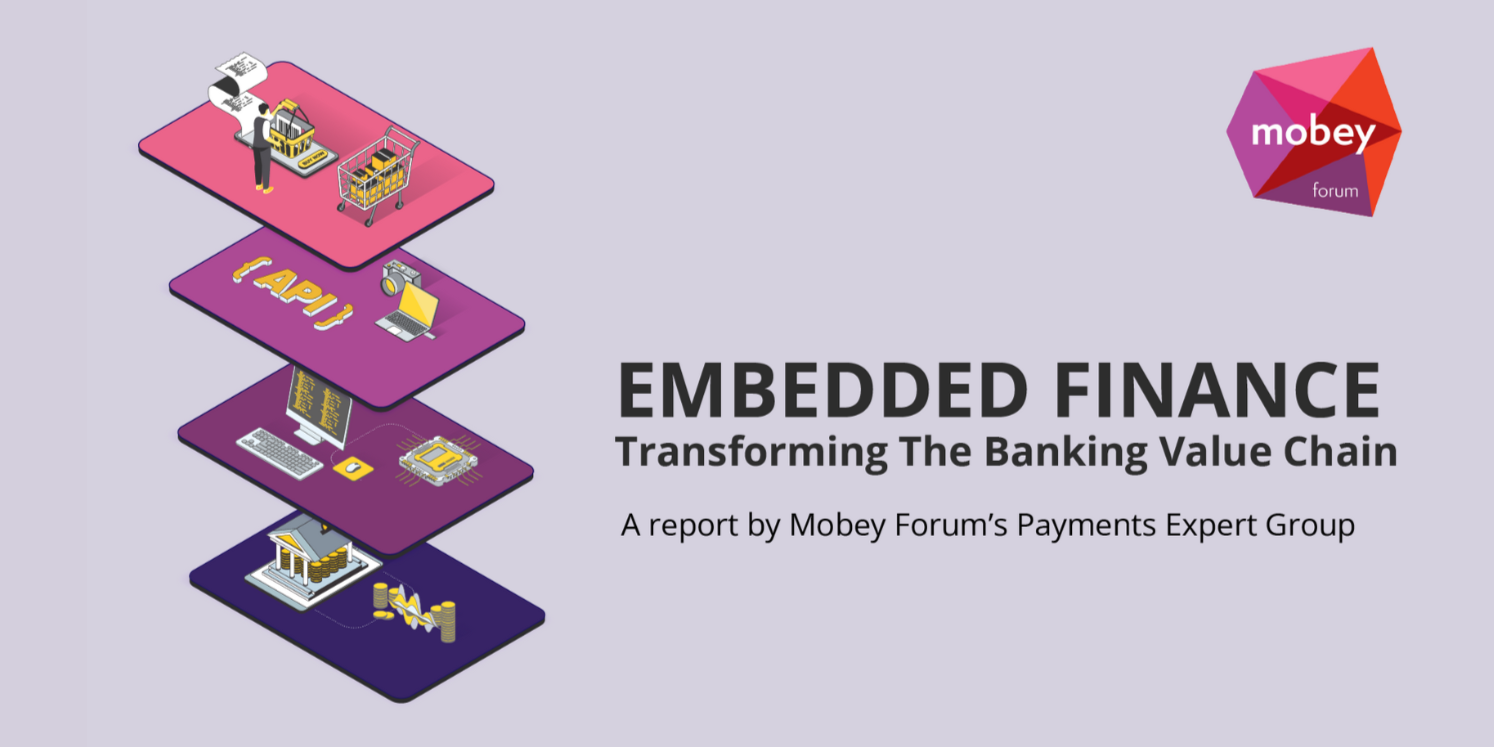

![The Best Sustainable Pet Food [Brand Name] The Best Sustainable Pet Food [Brand Name]](https://globalpetindustry.com/wp-content/uploads/2023/10/7-josera.png)
